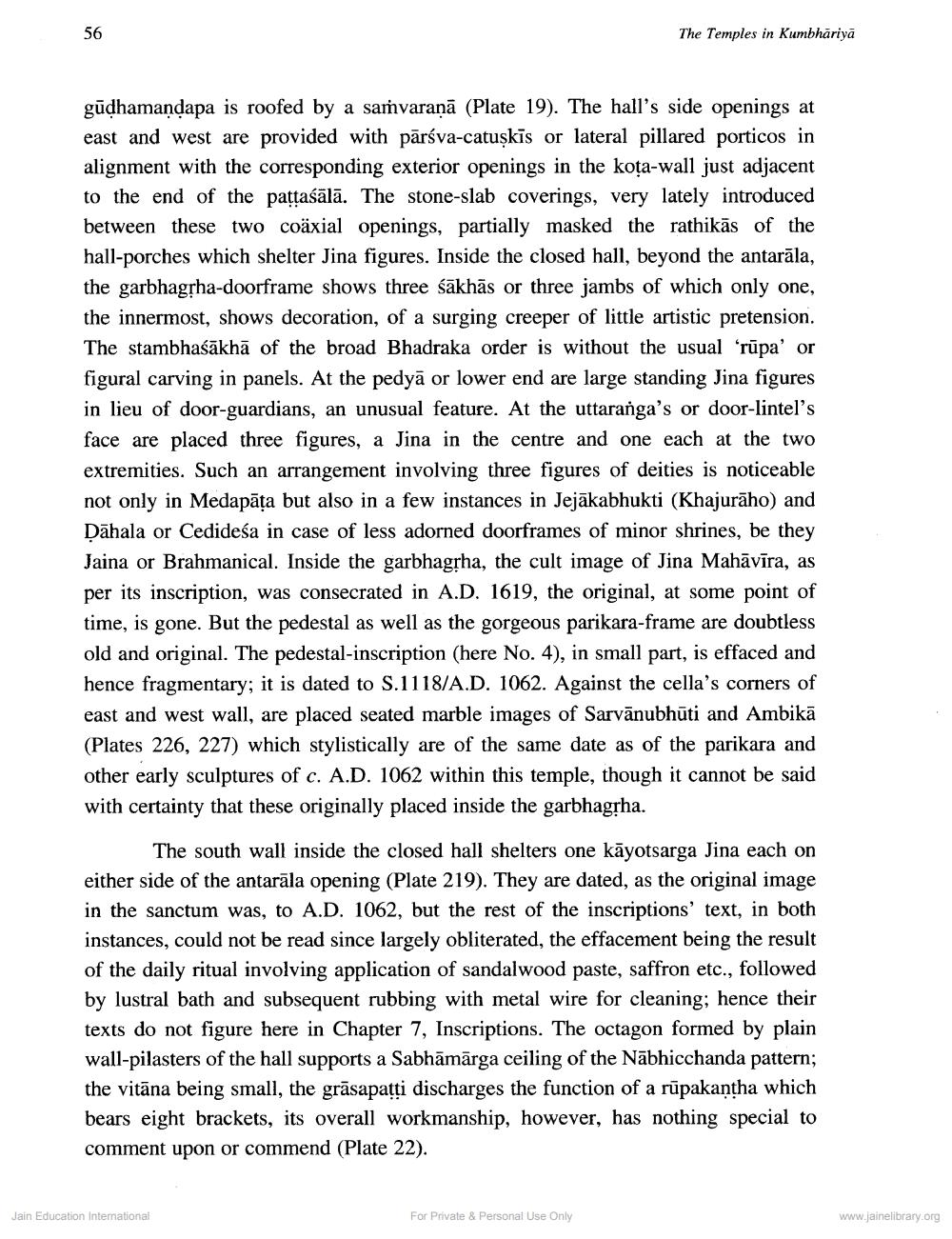________________
The Temples in Kumbhariya
gūdhamandapa is roofed by a sarvaranā (Plate 19). The hall's side openings at east and west are provided with pārsva-catuskis or lateral pillared porticos in alignment with the corresponding exterior openings in the kota-wall just adjacent to the end of the pattaśālā. The stone-slab coverings, very lately introduced between these two coaxial openings, partially masked the rathikās of the hall-porches which shelter Jina figures. Inside the closed hall, beyond the antarāla, the garbhagsha-doorframe shows three śākhās or three jambs of which only one, the innermost, shows decoration, of a surging creeper of little artistic pretension. The stambhaśākhā of the broad Bhadraka order is without the usual “rūpa' or figural carving in panels. At the pedyā or lower end are large standing Jina figures in lieu of door-guardians, an unusual feature. At the uttaranga's or door-lintel's face are placed three figures, a Jina in the centre and one each at the two extremities. Such an arrangement involving three figures of deities is noticeable not only in Medapāța but also in a few instances in Jejākabhukti (Khajurāho) and Dāhala or Cedideśa in case of less adorned doorframes of minor shrines, be they Jaina or Brahmanical. Inside the garbhagrha, the cult image of Jina Mahāvīra, as per its inscription, was consecrated in A.D. 1619, the original, at some point of time, is gone. But the pedestal as well as the gorgeous parikara-frame are doubtless old and original. The pedestal-inscription (here No. 4), in small part, is effaced and hence fragmentary; it is dated to S.1118/A.D. 1062. Against the cella's corners of east and west wall, are placed seated marble images of Sarvānubhūti and Ambikā (Plates 226, 227) which stylistically are of the same date as of the parikara and other early sculptures of c. A.D. 1062 within this temple, though it cannot be said with certainty that these originally placed inside the garbhagrha.
The south wall inside the closed hall shelters one kāyotsarga Jina each on either side of the antarāla opening (Plate 219). They are dated, as the original image in the sanctum was, to A.D. 1062, but the rest of the inscriptions' text, in both instances, could not be read since largely obliterated, the effacement being the result of the daily ritual involving application of sandalwood paste, saffron etc., followed by lustral bath and subsequent rubbing with metal wire for cleaning; hence their texts do not figure here in Chapter 7, Inscriptions. The octagon formed by plain wall-pilasters of the hall supports a Sabhāmārga ceiling of the Nābhicchanda pattern; the vitāna being small, the grāsapatti discharges the function of a rūpakantha which bears eight brackets, its overall workmanship, however, has nothing special to comment upon or commend (Plate 22).
Jain Education International
For Private & Personal Use Only
www.jainelibrary.org




